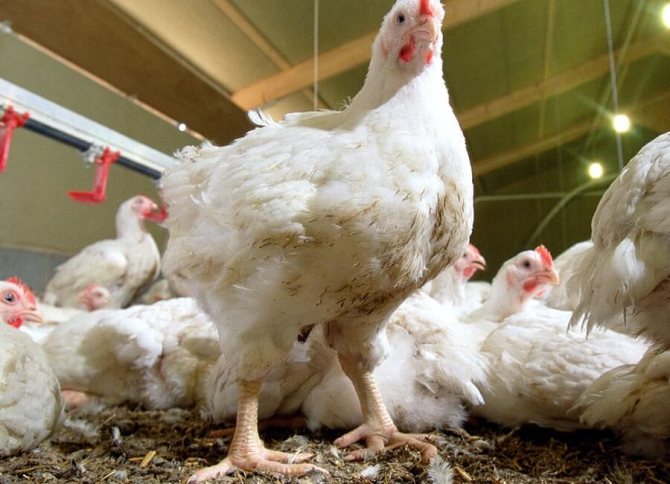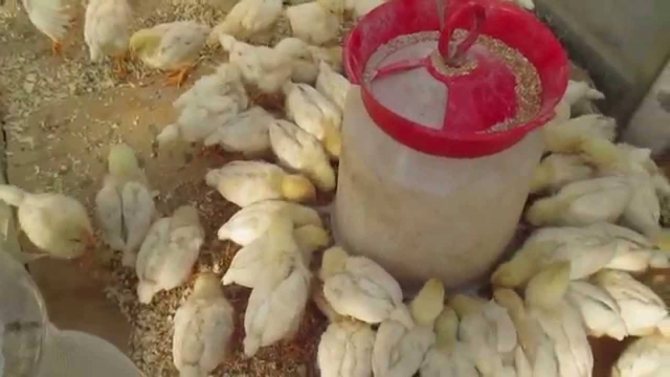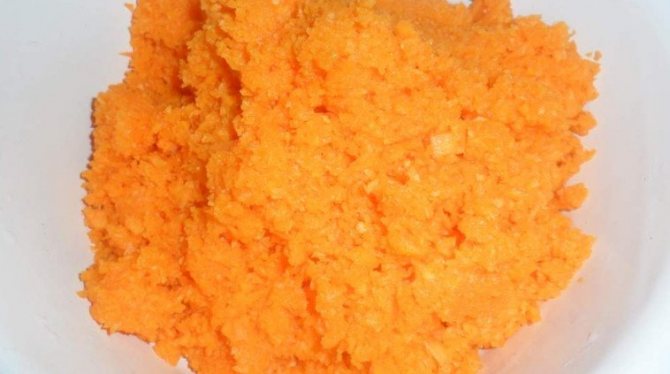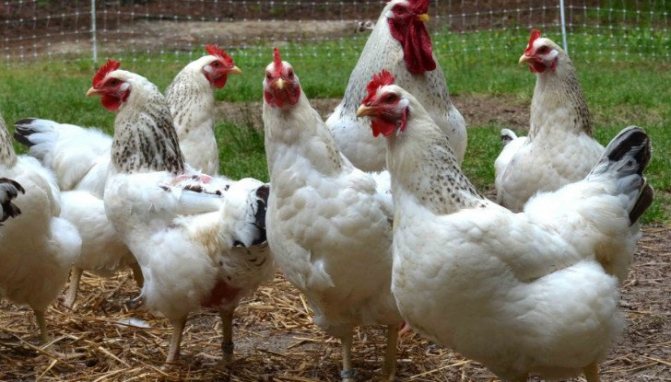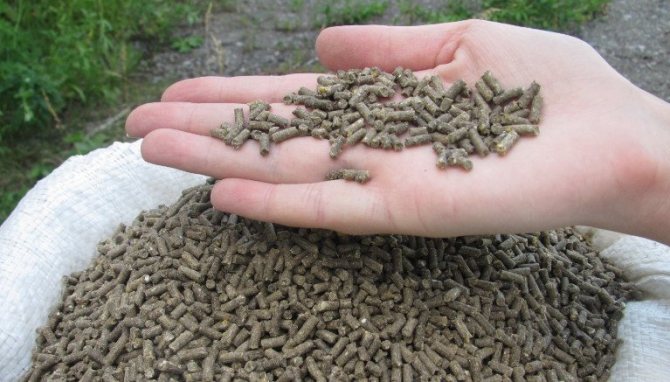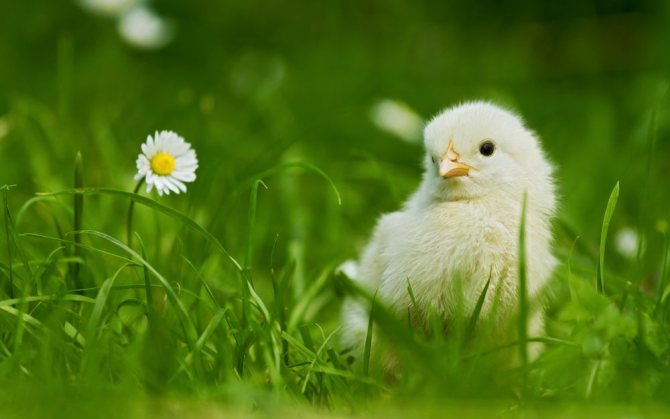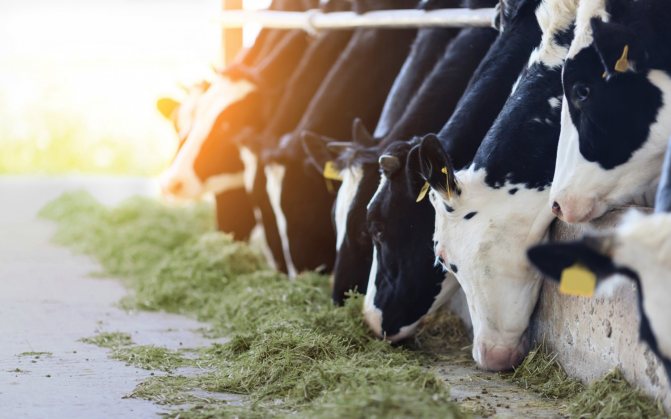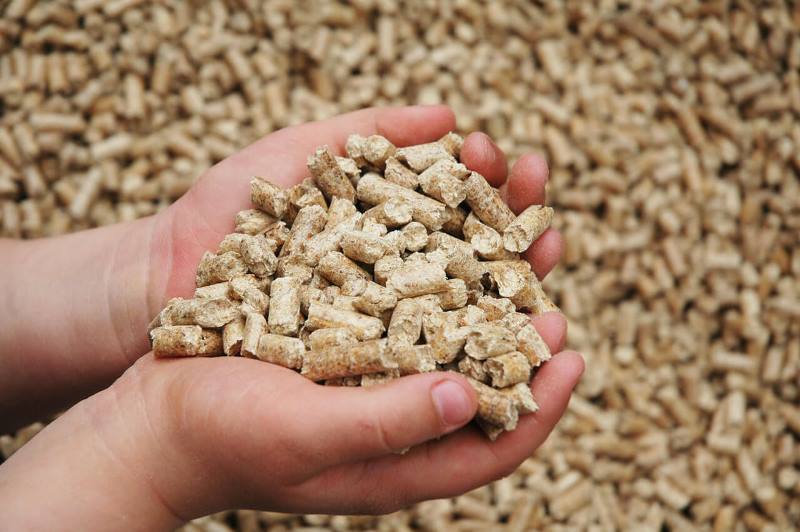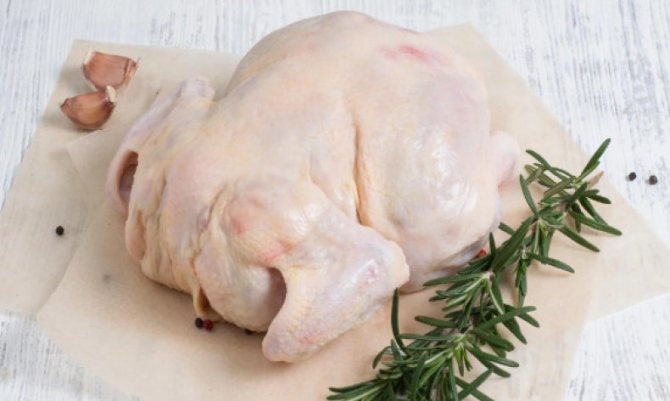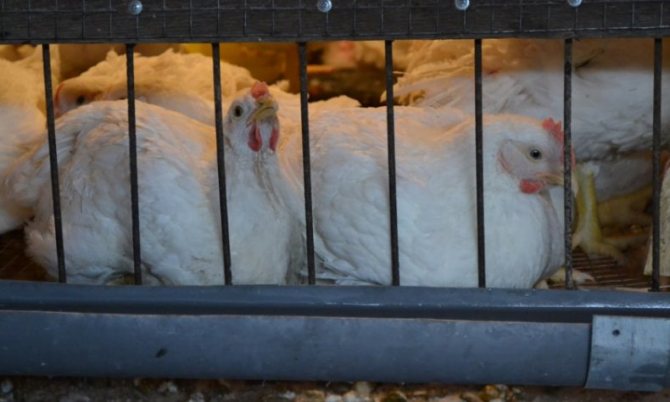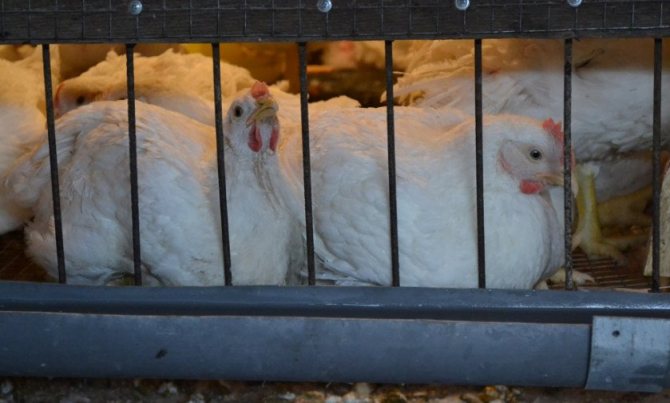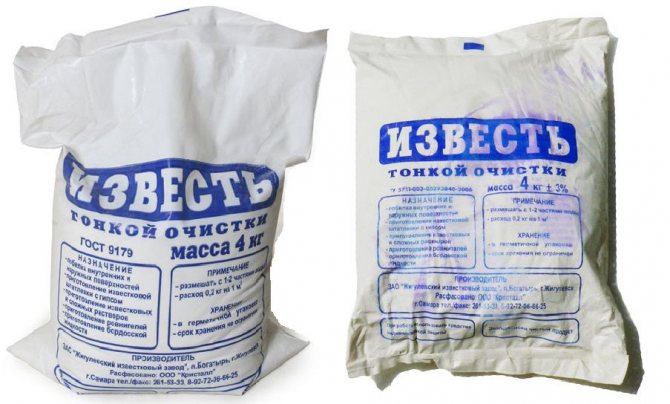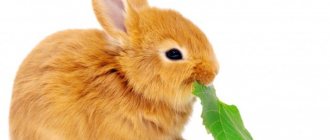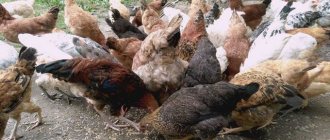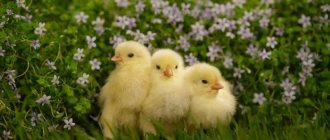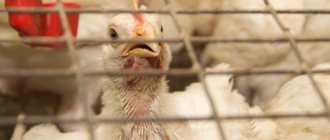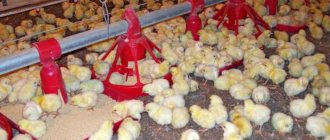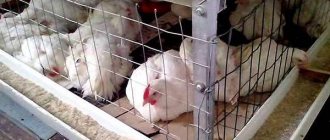- Broiler conditions
- What and how to feed broilers
- How many days to feed broilers?
Currently, broilers are the most profitable and affordable meat breed of chickens for growing at home and in poultry farms. It is not difficult to buy broiler chickens in incubators or from local entrepreneurs engaged in their breeding, feed and medicines are not in short supply, besides, the population has already accumulated enough experience in growing them.
Well, for those who do not have enough experience and knowledge in poultry farming, we advise you to pay attention to this article, in which we will try to tell everything about the features of broiler feeding.
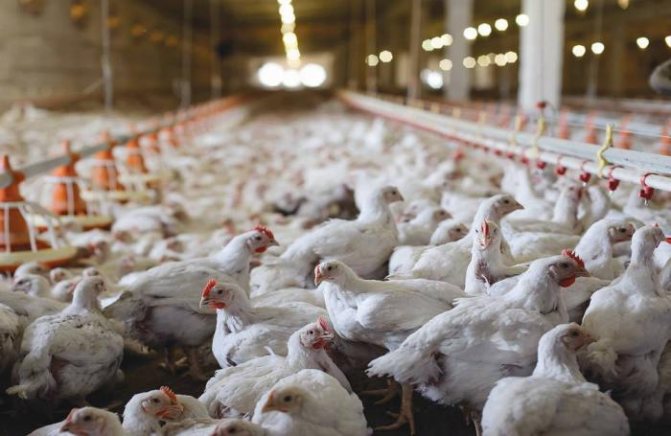
Power features
Broilers have some differences from ordinary chickens, not only in terms of keeping methods, but also in feeding. Any change in diet can cause undesirable diseases in birds and a halt in weight gain, which is most important when breeding broilers.
There is an opinion that broilers can be bred and raised exclusively on compound feed, without additives such as vitamins or plant products. As a rule, this is possible if drugs with hormonal changes in birds are used, as well as with the use of antibiotics. But this feeding is wrong. Firstly, this can negatively affect the consumers of such meat, and secondly, the broiler also needs grains, minerals and other substances. Naturally, their consumption will be slightly more than when feeding a regular chicken.
Broilers are considered to be meat birds, and therefore, the key to success lies in nutrition. For feeding, you should select only balanced feed, which includes all the necessary substances. Only by choosing the right feed can you get income in the form of meat and profit from the money spent on growing. Also, breeders need to know how much vitamins and minerals should be added to the diet, depending on their age.
Today, every breeder can simply purchase the right feed that is tailored to the needs of broilers and for quick weight gain. The main thing when buying is to know how many days or months the birds are, and to buy food specifically for the broiler. Thus, with the help of compound feed, it will be possible not to do food with your own hands, but simply use the norms indicated on the package.
You should know that such birds need a certain amount of feed per day, and the rate is calculated taking into account the age of the bird. For every 5-10 days, breeders should increase their feed intake by about 10-15 grams. Also, do not forget about drinking plenty of fluids. Broilers should always have fresh, clean water.
As for the composition of the feed, as a rule, it includes cereals, as well as bone meal, salt or chalk, various fats and cake. All ingredients and their quantity directly depend on the age of the bird.
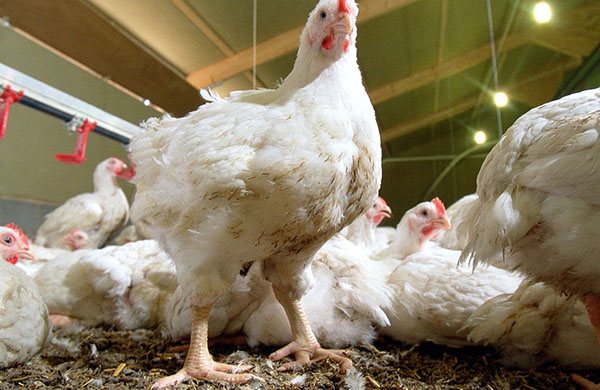

Varieties of compound feed for chickens
After the first ten days, the egg and curd mass can be removed from the diet, and the whey can be left until one month old. Novice breeders often ask themselves the question: “How long to feed with“ Start ”? The answer cannot be unambiguous.
The duration depends on the manufacturer's recommendation.Some companies have an additional "Predstarter", which can be fed only up to a week of age.
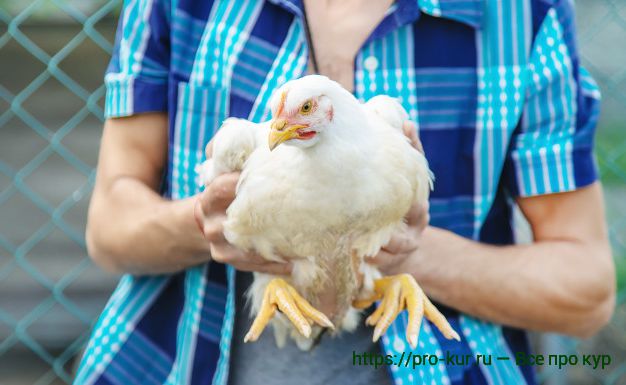

In other cases, feeding is divided into the following periods:
- From the first days to two weeks (0 - 15 days).
- After two weeks to one month of age (15 - 30 days);
- From one month to one and a half months (30 - 45 days).
- From one and a half to two months (45 - 60 days).
Advice! The presented age categories indicated on the packaging are conditional. Of course, you should not throw out the compound feed if the chickens are already older, and the mixture still remains. You can safely feed, and then transfer to the next category.
Dry formulation manufacturers also indicate the daily dosage of the mixture. The dose is calculated based on the number of heads in the hen house. This aspect is important to consider! But what if the birds eat their daily ration very quickly? You shouldn't starve them.
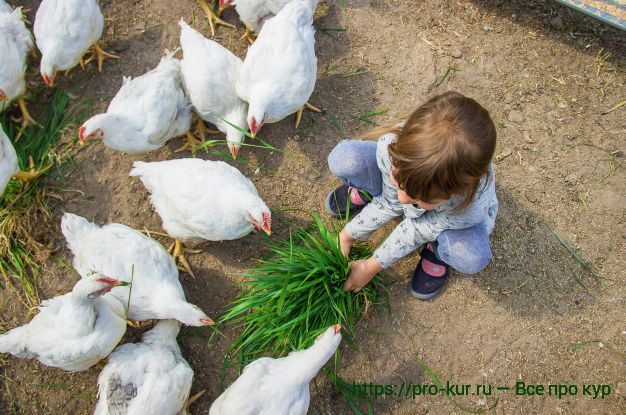

In this case, you need to enter an additional portion. Otherwise, the birds will begin to lag behind in growth. The best option would be to install a special automatic feeder in the chicken coop, which will supply food as it is eaten. In this way, chickens can always gorge themselves at will.
It is important that the drinking bowl is also automatic and the birds can drink at any time.
Calculation of nutrition for chickens
In order to figure out the amount of feed required before slaughter, a special growth table should be made. Such a table will allow you to understand what the daily rate of the bird is and will allow you to adhere to those standards that allow you to successfully raise chickens.
For the first five days, chicks will need to eat no more than 15 grams of feed. After another 5 days, the intake should be increased to 20 grams. From day 11 to day 20, chicks should be given from 45 grams of compound feed per day. Further, the amount of feed should be increased by 15-20 grams, every new 10 days. Thanks to this nutrition, the bird will consume about 115-120 grams in a 2 month period. Based on how many birds there are, you can calculate the amount of feed in kg per broiler.
In order to make it easier to count and for visual information, a nutrition table is provided below:
| Age, days | Feed, gr. |
| 1-5 | 15 |
| 6-10 | 20 |
| 11-20 | 45 |
| 21-30 | 65 |
| 31-40 | 85 |
| 41-50 | 100 |
| 51-60 | 115 |
For the first 7 days, chicks need to be fed frequently. Thus, the food intake of chicks should be from 8 times a day, but in small portions. Broilers have a poorly developed digestive system, so the young cannot physically digest a lot of food at once. Already starting from the 8th day, young animals can consume their food ration for 5 feedings per day. And from the age of one month until the moment of slaughter, they can be transferred to two meals a day.
As it is already clear, broilers grow from how much feed they eat per day. In the first five days, young growth will only be able to grow by 15 grams. Closer to day 18, the young should already have a weight of another 30 grams more, naturally, and the feed consumption increases. With a period of intensive feeding until the moment of slaughter, the bird gains significantly weight. Thus, at the end of fattening, the weight of chickens will constantly increase by 60 grams.
It is worth knowing that one should not expect such an increase from females as from males, although the feed consumption per individual is similar. As for the digestive system, it is rather weak in broilers, therefore, for growth, you will need to choose the right feed. For example, when preparing food at home, the first 10 days should be grind the components to the finest fraction. Further, the feed pellets may be slightly large. Rough feed, birds can be fed only from 25-30 days of keeping.
You also need to know that the first half month of bird feeding is very important, since the body and intestinal tract are being built. All mistakes made can adversely affect development or even lead to a fatal outcome. All foods must be well digestible. For example, at home, you can give oatmeal, chopped barley.Cottage cheese and oats are also good for birds. When the chicks are 7 days old, they will be able to eat vegetables and greens, which are an excellent source of vitamins. But such food should not be less than 5 grams per individual.
As for dairy products and potatoes, you can start feeding them only from the 20th day. Just they will have a great effect on weight gain. Vegetables such as cucumber or beets should not be given to birds.
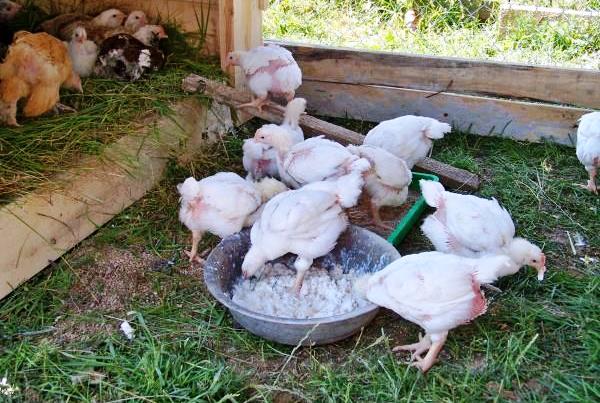

What and how to feed broilers
Broilers are chickens of meat productivity, therefore, for their feeding, special feed should be selected, and feeding programs developed by specialists should be followed. Only in this case can we hope that the costs of business development will pay off in full and bring profit.
The best option for feeding broilers is compound feed, you can add various additives yourself. Which and how much depends on the age of the chickens. On the market there are mixtures designed and manufactured specifically for chickens, for hens of the egg direction, and for broilers. Having bought ready-made combined feeds, you will only have to provide the livestock with a daily feed rate and wait for the costs to pay off.
How many kilograms of feed does a chicken need to develop quickly and fully? This table shows how much feed 1 chick eats per day, and what is the daily feed consumption. Please note that the daily feed consumption increases every 5-10 days.
On average, broiler chickens from zero to one week old need to be fed 8 times a day, otherwise their stomachs simply do not have time to digest large amounts of feed and they will get sick. Starting from the second week, young animals are fed 5 times a day, from the third - 4 times a day, from 4 weeks until slaughter - 2 times a day.
Broilers are fed according to the scheme: start - start - fattening - finish. Weight gain directly depends on how many grams of feed per day 1 chick eats. We look at the table on which the average daily gain and feed consumption by age per 1 chick are determined:
When properly fed, a ten day old chick should weigh 0.2-0.25 kg. Moreover, the chickens weigh 20-30 grams less than the cockerels, although they eat along with the cockerels.
The structure of the feed also depends on the age of broiler chickens, and on the ability of the stomach and intestines to digest this or that type of feed. So, from the first to ten days, chickens can be given microgranules or sifted crumbs. From 11 to 24 days - granules with a size of 2-3.5 mm, as well as a scattering of coarse grinding. From day 25 to slaughter - granules of 3.5 mm, and coarse milling.
Feeding broilers for the first two weeks of life is especially important; an improperly formulated diet can destroy all young growth. Feed should be easily digestible and easily soluble. Millet, oatmeal, bran, crushed barley, oats, boiled eggs, and cottage cheese meet these requirements well.
Fresh herbs can be added starting on day 5 at the rate of 5 grams per chicken per day. Weekly broilers should be given mashed pumpkin and carrots.
A good increase in muscle mass can be achieved if boiled potatoes, sunflower cake and dairy products are added to the diet of chickens from the 20th day. And yet, at this age, the chicken's stomach is weak, so it needs to be given more fresh greens and sprouted wheat grains.
If fresh grass is not available, it can be replaced with grass flour. In summer, broilers are given fresh vegetables - carrots, pumpkin, and in winter dry grass, eggshells, vitamins from a pharmacy.
From the same age, 20% of millet in the diet of young animals can be replaced with boiled potatoes. For a quick increase in muscle mass, fresh fish and bread yeast are added to the mash. Yeast is diluted with warm water or warm milk, at the rate of 200-300 grams of yeast per 10 kg of dry feed.
From one month old, chicks can be fed whole grains.Finishing feeding takes place unchanged, however, more grass and juicy feeds are introduced into the diet.
Compound feeds for broilers can be prepared independently, at home, they contain nutrients, vitamins and minerals necessary for the growth of young animals.
How many different types of grain should there be in a compound feed? In percentage terms, the composition of the feed should look like this:
- 25-30% wheat;
- 15% barley;
- 10-15% peas;
- 20-25% corn;
- 10% soy;
- 5% sunflower cake or cake;
- 5% fish meal, chalk, vitamins, yeast.
Finishing feeds are prepared from:
- 45% corn;
- 15% wheat;
- 10% barley;
- 15% cake;
- 5% bone or fish meal;
- 5% feed yeast;
- 5% chalk, greenery, vitamins.
You can not give broilers cucumbers, zucchini, beets - these products weaken the stomach and cause diarrhea in the bird.
For a quick weight gain, young animals can be fed not only with dry, but also with wet compound feed. Dry compound feed is a granular mixture, and wet feed is a mixture prepared with whey, milk or broth. Mixers are made at the rate of 0.5 liquid per 1 kg of dry feed. For a change, the composition of the mash can and should be changed more often.
Do not make the mash for future use - the remnants of the mash will turn sour, and it will not be possible to use them in feed. In this case, they should be refrigerated, or given next time only after heat treatment.
Feeding birds from A to Z using compound feed
For maximum results, use commercially available compound feed. The cultivation itself takes place according to the principle of nutrition, which is provided in the table:
| Pre-start period. Food PK 5-3. The mass of birds is 42-115 gr. | Start period. Food PK 5-4. The mass of birds is 120-640 gr. | Fattening period. Food PK 6-6. The mass of birds is 0.7-2.1 kg. | Finish period. Food PK 6-7. The mass of birds is 2.1-2.4 kg. | |
| Age, days | 0-5 | 6-18 | 19-37 | 38-42 |
| Feed rate, gr. | 15-21 | 25-89 | 93-158 | 160-169 |
| Feed consumption for the period, kg. | 0,1 | 0,76 | 2,4 | 0,83 |
| Mass gain per day, gr. | 15 | 33 | 54 | 56 |
Feeding period
Many broiler breeders are interested in the question of how many days it takes to raise a bird from young stock to the moment of slaughter. It must be said right away that everything depends on the breeder, but, as a rule, the slaughter is carried out in the period from 2 to 3 months of the life of the birds. It is by this time that the birds should have the required mass. By the way, it is better to slaughter when the weight is sufficient, this will not only save costs, but also preserve the quality of the meat.
Often the weight of a 3 week old bird will be up to 0.7 kg. When the birds are one month old, they should be about 1.5 kg. At two months, the weight of the broiler should be 2.5 kg.
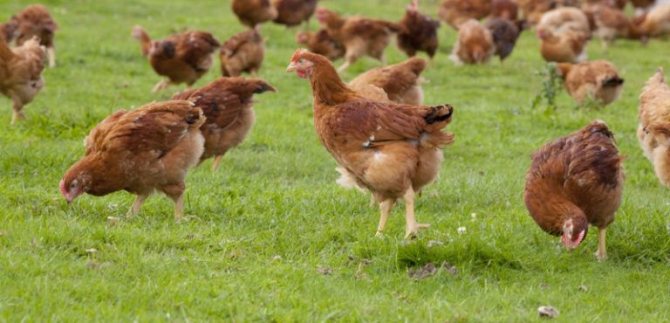

The first step a novice farmer should take is a rough calculation that includes feed costs. Broilers are among the most profitable meat poultry, they are kept both in large complexes and in private farms.
In order for chicken breeding to be successful, a potential owner needs to calculate how much feed is required per head per knock, and then it is easy to determine the total amount of waste.
Broiler poultry growth rate
Broiler breeds have a high growth rate. For 56 days, they are able to gain a mass sufficient for slaughter. The average weight depends on the breed characteristics and gender of the birds (for example, females weigh about 2 kg, and roosters weigh 2.5-2.8 kg). This weight provides a presentation for carcasses that contain a sufficient amount of meat products.
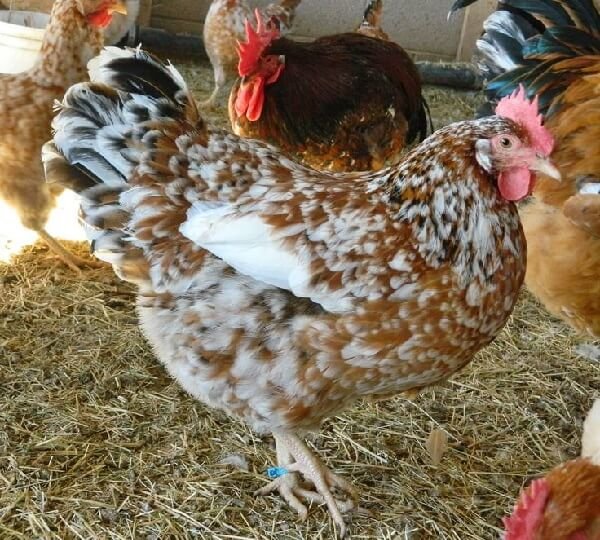

Growing broilers for more than 90-120 days does not make much sense. The bird consumes food in large quantities, but practically does not gain weight. Most farmers send birds for slaughter at about 3 months of age.
Feeding for fast growth and weight gain
For successful and fast growing of broiler chickens in subsidiary farms, natural growth stimulants can be included in the feeding of broiler chickens.They include the necessary micro- and macronutrients, vitamins and minerals, enzymes, prebiotics.
The most common growth promoters for broiler chicks are:
- Ganaminovit is a water-soluble multivitamin preparation. Normalizes metabolism with an insufficiently balanced diet, improves growth and body weight gain of the bird. Recommended for use after diseases of broilers, preventive vaccinations, deworming.
- Avesstim (Brovafarma) - promotes the activation of certain biochemical processes in cells, has an antioxidant immunomodulatory, anti-inflammatory, hepatoprotective, detoxifying effect.
- Introvit A is a complex of vitamins and amino acids. Used for the prevention of vitamin deficiency, hypovitaminosis, metabolic disorders, colds and infectious diseases.
- Chiktonik - promotes increased resistance to infectious diseases, improves metabolic processes, growth and weight gain of broilers.
- B.K.M. - complex vitamin preparation. It is used as a prophylactic agent for hypovitaminosis, metabolic disorders, after antibiotic therapy.
Important! It is possible to use a growth stimulator for growing broilers only after consultation and with the permission of a veterinarian who will tell you the most necessary drug and the appropriateness of its use.
Amount of feed
The most suitable food for such birds is compound feed. You can buy the ready-made mixture in a specialized store or make it yourself. How much weight a chicken gains depends on how much a chicken or an adult bird can eat in a day. All fattening is carried out according to the existing schemes, which include the following stages:
Broilers need to be fed twice a day. One adult bird per day consumes 0.12 kg of compound feed, with a water consumption of 250 ml. In the presence of juicy feed, the portion weight per head is increased to 0.17 kg.
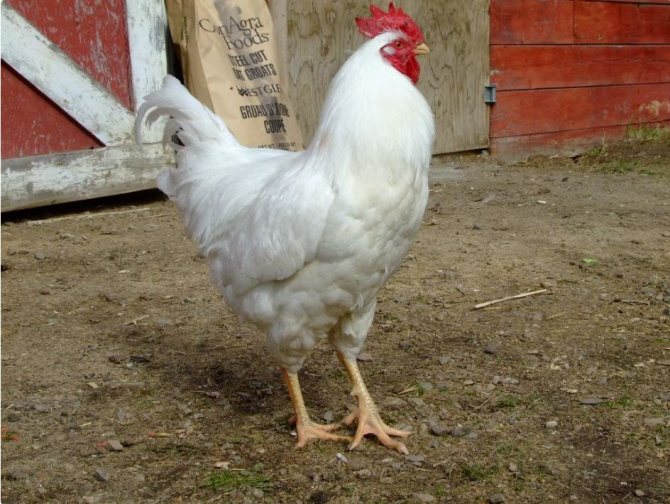

In the following table, you can get acquainted with the data on how compound feed is consumed.
Weight gain (grams)
How much feed do you need per day
Feed consumption per head per period (gram / bird)
Weight gain per day
Thanks to this scheme, the feed in the right amount is distributed to broilers at certain time intervals. The birds receive the nutrients they need for growth, while building up muscle mass evenly.
Home care rules
Broiler chicks require more care than regular hens. A warm house and a clear daylight regime are important. The room is washed and whitewashed, drinkers and feeders are installed, lighting and heating are provided, a thermometer is installed. A sawdust blanket is placed on the floor. The first 2 weeks should be provided with round-the-clock lighting and a temperature of + 30 degrees. In the future, reduce the temperature by 2 degrees per week to +22 ° C. When broilers are 1 month old, daylight hours should be 14 hours, the lighting is turned off for 10 hours.
There should be no more than 13 heads per 1 m2. If there are more livestock, you should equip the barn with cages.
On a note. The floor in the coop should always be dry and clean. Humidity can make a bird sick.
There are 2 ways of growing:
- Intensive. Young animals are acquired throughout the year every 4 months.
- Extensive. The classic way is when the bird is purchased in spring and summer and raised until the fall season.
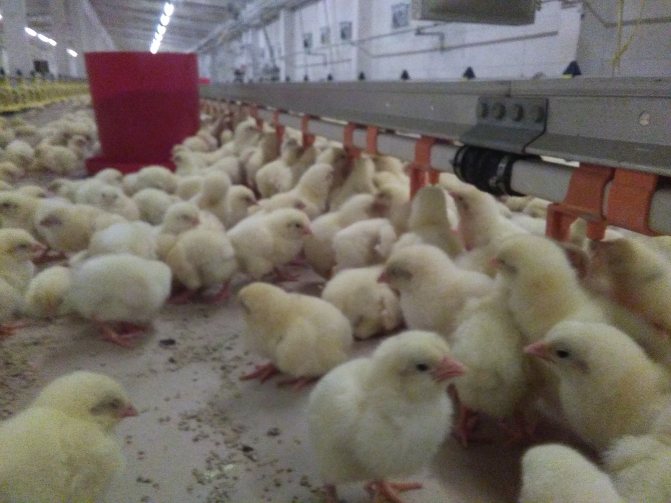

Chickens are in the poultry house
The chickens are kept in the poultry house, do not walk and use special feed.
Important! Broilers are not grown for more than 70 days. This age is characterized by a slowdown in growth, which means that the feed will not pay off.
The diet of small chickens includes millet, semolina, boiled eggs, barley and oats. In this case, most of the grain should be. 3-day-old young can be fed with chopped herbs, grains and eggs 8 times a day.From day 20, you can add boiled potatoes, bone meal and chalk, frequency - 4 times a day. Vitamins can be purchased at specialized stores. After a month, it is enough to give solid food. It is important that chicks always have clean, warm drinking water. In the second month, protein is removed from the diet, and the volume of the grass increases.
To prevent digestive problems, chickens should be given a solution of potassium permanganate. Fine gravel will also help.
Prestart
It is very important in the first days of the chicks' life to provide them with the correct diet, since the largest mortality occurs precisely during this time period. From day 1 to day 5, the chick should eat 15-20 grams of feed. Feeding is carried out 8 times a day so that the young do not experience hunger.
The average daily weight gain is about 15 grams. At this time, they give food that can be easily absorbed by the immature stomachs of the chicks. You can use not only compound feed, but also the following types of food:
- millet;
- oatmeal;
- low-fat curd products;
- boiled eggs.
When this stage is over, the chicken should gain a mass of 50-115 grams.
How to calculate the total volume
Let's calculate the amount of feed by period:
- during the prelaunch period, the chick eats 15-20 g of feed per day. Multiplying by 5 days, we get that the chick needs about 100 g of food;
- in the starting period, the amount of food increases. On average, a bird receives about 50 g of food per day, and for the entire time it will eat 750 grams;
- at the stage of fattening, broilers receive a food volume that corresponds to 100-150 g per day. Multiplying by 20 days, we get 2-2.5 kg of feed;
- at the finish line a broiler needs about 160 g of feed per day, so he will eat about 3.2 kg for the entire time.


Rules for feeding broilers at home Calculations show that broilers will eat the largest amount of food at the fattening and finishing stages. In total, before slaughter, the bird needs from 6 to 6.5 kg of compound feed.
Start
This period starts at 6 days and ends at 20. The chick should receive 30 grams of feed per day at the initial stage and 80 grams at the final stage. This suggests that there is a gradual increase in the amount of feed, with a slow decrease in the frequency of feedings (up to 5 times).
In one day, the chick should gain a mass of 30 grams, at the end of the term, the chick begins to weigh 120-650 grams. The following types of feed are introduced into the diet:
With the onset of winter, when it is not possible to find grass, hay or grass flour is given instead. It is important not to forget about the availability of fresh drinking water in the birds' drinkers.
Boiled potatoes in broiler diets
This useful product is recommended for feeding poultry. Vegetable crops are great for diversifying your diet. It contains beneficial vitamins and starch. It is best to give boiled potatoes and add them to the mash. This ingredient is introduced after the bird reaches 20 days of age.
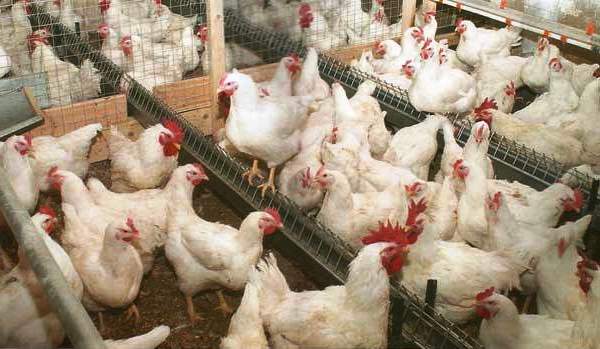

Broilers change
Potatoes promote good weight gain, but every farmer should be aware that green, spoiled or raw tubers are not suitable for broilers.
Fattening period
At this time, broilers are gaining the greatest weight, and therefore there is a significant increase in feed. Until the age of 40 days, each individual should receive 100-150 grams of feed. The weight gain depends on how correctly everything is organized (usually a broiler gains a mass of 700-2100 grams). Boiled potatoes, kefir, sunflower cake contribute to weight gain.
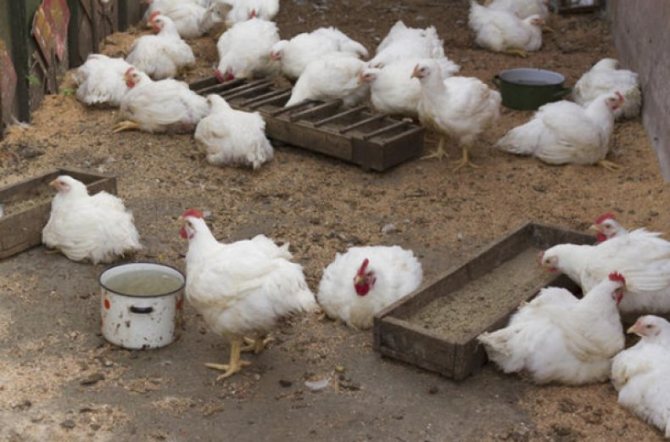

Mushrooms are made with fresh fish and yeast, which has a beneficial effect on weight gain. The frequency of feeding is carried out 3-4 times a day. With the right diet, the broiler gains 50-55 grams daily.
How much feed do broilers eat?
The most suitable food for feeding this bird is compound feed. Ready-made mixtures are sold in specialized stores. The correct weight gain directly depends on how much the chicken and the adult eat per day.Therefore, their fattening is carried out according to a special scheme, which includes the following stages: pre-start period, start period, fattening period and finish.
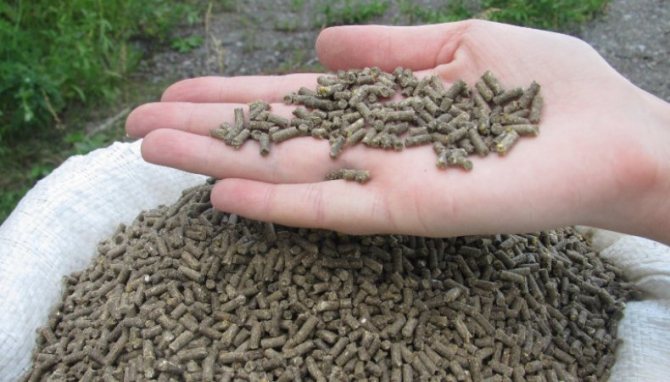

Prelaunch period
A correct diet in the first days is especially important, since the greatest mortality is observed precisely at this time. In the first 5 days, the chicken needs about 15-20 g of feed daily. At this time, the young are fed 8 times a day so that the stomachs that are not yet strong can digest food. The average daily gain should be 15 grams. At this stage, you need an easily digestible food. In addition to compound feed, millet, oatmeal, cottage cheese and boiled eggs are also suitable. At the end of this stage, the weight of the chicken should be between 50 and 115 g.
Start period
At this time, which starts from 6 days and lasts 20 each, the chicken should receive from 30 g (at the beginning) to 80 g (at the end) every day. This means that the amount of food is gradually increasing. The number of feedings can be reduced up to 5 times. Weight gain per day should be about 30 g, and at the end of the period, the weight of the chicken should be from 120 to 650 g. At this time, greens, grated pumpkin and carrots are introduced into the diet. In winter, in the absence of green grass, it is replaced with hay or grass flour. It should also be remembered that chickens need sufficient water.
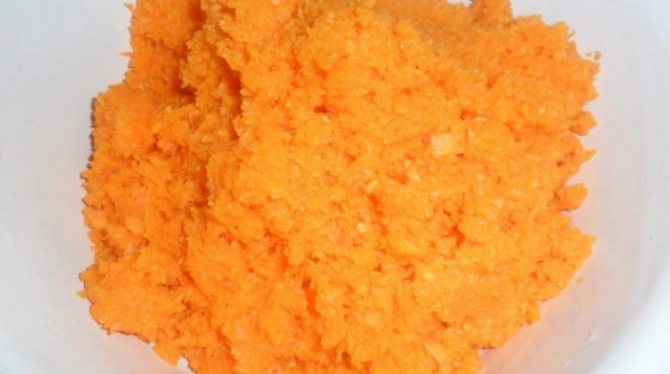

Fattening
This is the period of the greatest weight gain, therefore, the amount of feed increases significantly. Up to 40 days, birds need to receive at least 100-150 g of food per day. Feeding during this period has the greatest effect on weight gain, which should reach an indicator of 0.7 to 2.1 kg. A good set of mass is achieved by introducing boiled potatoes, kefir, sunflower cake into the diet.
Fresh fish and yeast can be added to the mash (200 g of yeast is added to 10 kg of feed, which is diluted with warm water or milk). The number of feed intake can be reduced by up to 3-4 times. If the bird receives the correct feeding, then the daily weight gain should be at least 50-55 g.
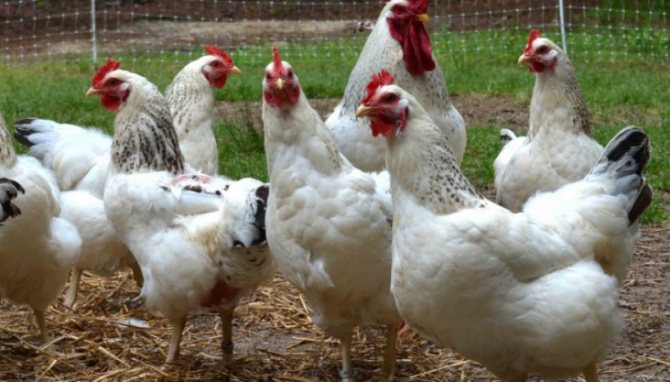

Finish
At the finish line, broilers are fed 2 times a day, but the amount of feed should be at least 160-170 g. At the age of over 1 month, the bird can be fed not with crushed, but with whole grain, the diet should contain more succulent feed and grass. At this time, the volume of food is maximum, and at the end of it (at the age of 2 months) the bird is slaughtered. At this time, she should reach a weight of 2.1-2.5 kg. Further feeding will not bring the desired effect and the keeping of chickens becomes impractical.
Finish
Here they switch to two-time feeding, 160-170 grams of feed should fall on one bird. Broilers who have reached one month of age are switched to whole grain instead of crushed, and juicy feed and green mass are also added to the diet.
Food is given in the maximum volume, since young animals that have reached the age of 2 months will be sent for slaughter. At this point, the bird weighs 2.1-2.5 kg. It makes no sense to feed the birds further, because they begin to consume food in large quantities, but do not gain weight.
Shell rock and greens
When broilers reach twenty days of age, they begin to learn to use the sand and shell rock feeder. The sand component is necessary for grinding the food in the gastric sac, in fact it performs the function of teeth.
Shells are a natural source of calcium. Shell rock can be replaced by the constant presence of whey in the chicken coop. If there is no milk, then the shells will strengthen the skeleton and build muscle mass.
Greens are a very important part of the diet. If it is not possible to walk broilers on a fresh lawn, then you need to germinate the grain mixture yourself, for example, in a box or cup. Young sprouts contain a large amount of fiber and vitamins necessary for a growing body.
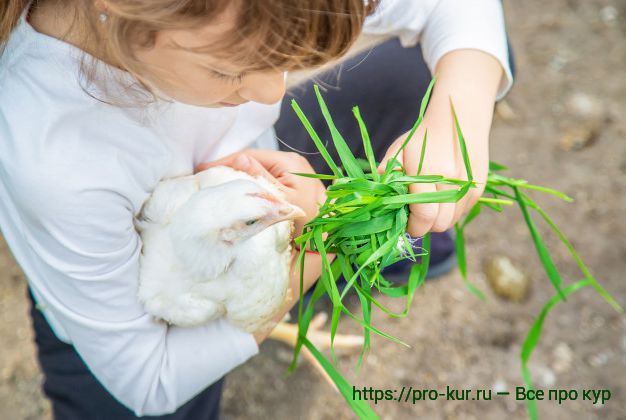

Do not change the feed drastically.Each new type of groundbait is introduced gradually, at first in small doses. It is necessary to track the birds while eating a new product, as well as evaluate the subsequent droppings.
If everything is in order, then you can safely increase the dosage and continue to feed the broilers.
Experienced farmers practice joint feeding with compound feed and homemade mixture. As a rule, chickens grow on dry food for up to two months. And instead of "Finish" they are transferred to natural formulations. This approach improves the taste of meat.
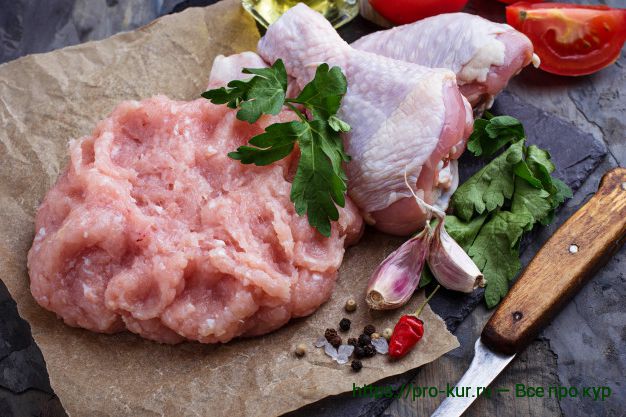

Helpful Feeding Tips
In order to avoid mistakes in feeding broilers and for them to gain weight better, it is worth following the following tips:
- Yeast will be a useful supplement for the diet, you can choose the feed or bakery option. Before mixing them with feed, it is necessary to dilute the powder in warm water. 0.2-0.3 kg of yeast is added to 10 kg of feed.
- Chickens will better eat fresh and un-trampled feed, and therefore food containers are made so that the bird cannot climb up there.
- When filling the feeders by 1/3, feed is significantly saved.
- Poor appetite in broilers, sluggish behavior and general weakness can be the cause of the development of any disease. It is best to plant such a bird and show it to a veterinarian.
Slaughter cone
A cone is sometimes used to simplify the slaughter of birds. It is made of iron with such dimensions that a chicken can fit in it, and a head can stick through the hole. In this case, the body is well fixed and it is much more convenient to cut the throat - this is done with scissors or a knife, after which the carcass is left for a couple of minutes to drain the blood. With this method of slaughter, the bird does not flutter and is not injured. For the manufacture of cones, in addition to iron, tarpaulin, linoleum or galvanized are used.
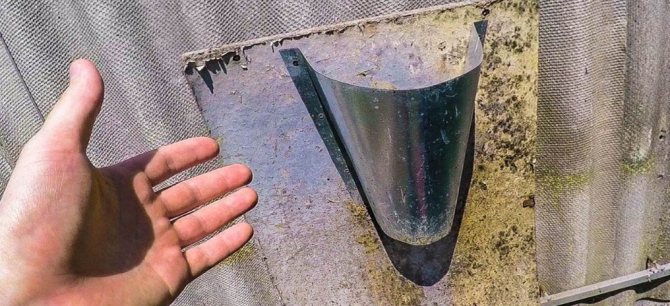

The most productive breeds
Today there are a large number of broiler breeds, you can get acquainted with their performance indicators in the following table.
Egg production rate for 365 days
When to slaughter
The English breed, originally bred as a fighting breed, over time, these qualities were lost.
140 pieces. One egg weighs 55-60 grams
The minimum age is 60 days. The bird weighs 2 kg. If you wait up to six months, then the representatives of the breed will gain another 2 kg
The breed is originally from France. Meat products are distinguished by excellent taste
300 pieces. Laying begins at the age of six months
You can slaughter at 30 days of age, broilers weigh 1.5 kg.
Bred in France, have a number of advantages over other broiler breeds
The minimum age for slaughter is 2-2.5 months. The bird is gaining weight in 1.7-1.9 kg
To grow a broiler, you will have to spend a lot of effort and at the same time strictly follow all the rules for growing this breed.
Slaughter can be done when the bird is 42 days old. At this point, they weigh 2.0-2.5 kg
Subject to the feeding technology, they show weight gain from 50 to 55 grams per day
180, the egg-laying period begins at the age of one year
You can slaughter a bird from day 60, when individuals gain a mass of 2.5 kg
They are distinguished by high early maturity
At the age of one month, weigh 2.5 kg
They are distinguished by good health, the survival rate of chickens reaches 98%
Youngsters are gaining weight of 1.5-1.6 kg by the age of one and a half months
High vitality, endurance, frost resistance
Slaughter is carried out from 40 days, when the bird reaches a weight of 2.4 kg
Broiler chickens are nearly omnivorous and gain weight rapidly. By the time of slaughter - one and a half months - they are able to gain almost 2.5 kilograms of weight. But even such gluttons cannot be fed with anything. In order for the chickens to “mature” quickly, and the meat of broiler poultry to be tender and juicy, you need to observe the diet and the correct proportions of the menu. But raising meat chickens must be profitable.Find out the costs of different types of broiler nutrition and help calculate how much feed a broiler eats before slaughter, a table with feeding standards for birds of different age groups.
You can read about how to raise chickens for meat in our article - here.
Broiler rearing mistakes
To raise real broilers, the following most common mistakes must be avoided:
- Buying chickens at the market. Day-old chicks, as a rule, are no different from each other. Only a specialist can determine the breed, which creates a huge scope for shenanigans. So, broilers bought from the hands after 1.5 months can turn into ordinary outbred domestic chickens, which will be offensive.
- Failure to comply with the temperature regime. Due to hypothermia or overheating of chicks in the first few days of their life, loss of the entire brood is possible. The optimum room temperature is 34-35 degrees in the first week, 32 in the second and 29, starting with the third.
- Avoid feeding vitamins and supplements. Broilers should receive them from day one.
- Incorrect content. Broilers do not need an enclosure for walking. Free space should be limited.
- Improper feeding. The lack of all the necessary vitamins and minerals in the feed leads to rickets and death.
Before starting broilers, you need to familiarize yourself with the existing experience of growing them, read special literature.
Features of broiler nutrition with natural products
When broilers are raised at home, they can only be fed on a natural basis. This increases time and labor costs, but it greatly improves the taste and nutritional properties of the meat product at the exit. Young animals perfectly eat grain, dairy and vegetable food, fresh leftovers from the human table. When compiling the menu, the age of the birds is taken into account.
The accustoming of young individuals to such food should occur gradually.
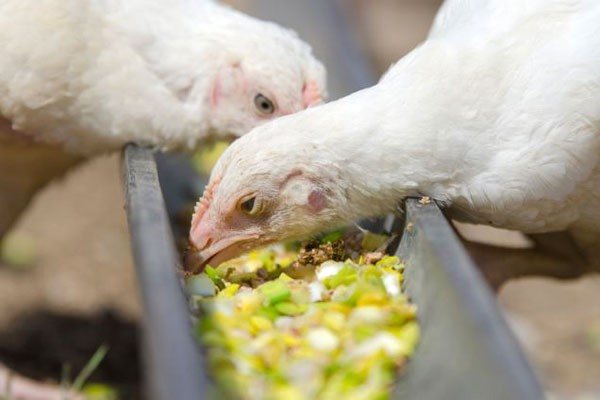

Broilers are very fond of organic mash.
At the age of seven, a coarsely grated pumpkin or carrot is added. In the second week, the mash is fortified due to green tops and garden herbs, even weeds - dandelion leaves, nettle, alfalfa. In the third week, they begin to add the leftover bread and boiled potatoes, as well as wood ash.


Broiler conditions
From hatching to 10 days
Newly born babies need a special menu. A feed mixture based on sifted crumbs is offered eight times a day with the indispensable observance of equal time intervals between meals. Be sure to have finely chopped boiled eggs and curd grains. They are needed to strengthen the immune system and prepare the digestion for rougher foods.
If there are very weak chickens in the brood that are not able to feed on their own, it is necessary to place them in a separate box and solder them with a milk yolk bump using a pipette.
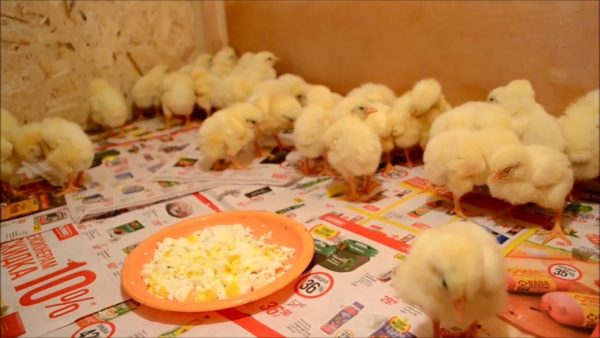

A mixture of chopped egg and cottage cheese is useful for babies.
10 to 14 days
The feed mixture of chicks needs to be diversified. Feed yeast is added to the menu in small quantities for accelerated weight gain. Steamed millet is also recommended for chicks, which is rich in protein, which is the main element of muscle development.
The diet of ten-day-old chicks includes mashed carrots. For starters, five grams per head per day is enough. Gradually, the dosage rises to twenty grams if the root vegetable is well absorbed. The diet must certainly contain grated shells, shells or chalk powder, replenishing the lack of calcium. You can pour the additive directly into the feeders. The amount is determined at the rate of three grams per head.
Fish oil is also included in the diet of chickens. Vitamin supplements, especially vitamin D, which prevents the appearance of rickets, will not interfere with chicks.
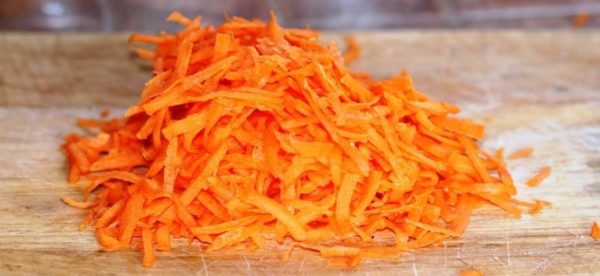

From 10 days, chicks can diversify their diet with grated carrots
14 to 30 days
Young animals can already assimilate any green food. To accelerate growth, it is recommended to add chopped boiled fish or offal to the chicks menu. Feed yeast is also added - two grams per chicken.
For a quick mass gain, young birds are fed mainly with wet mash. They are prepared in protein broths. When feeding poultry with meat and fish, it is important to control their freshness so as not to cause stomach ailments.
To develop a good skeleton and strengthen the skeletal apparatus of the legs, which is weak in broiler hybrids, feed the bird with fermented milk products and low-fat cottage cheese.
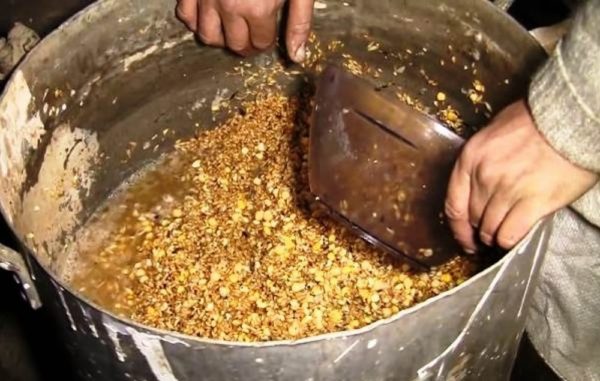

Wet mash - the main food of grown broilers on natural feeding
30 to 60 days
The basis of food is made up of a variety of cereals - wheat, oat, corn, barley grains, which should be steamed beforehand. Includes seeds of legumes such as peas.
These components are mixed in equal proportions and diluted with whey or protein broth. The curd component and fish oil are added to the composition. Additionally, they give any greens growing in the garden and tops from root crops, such as beets or radishes.
In addition, small shells, yeast, bone meal, and chalk powder are mixed into the feed mixture. Also, broilers eat waste from the human table with appetite.
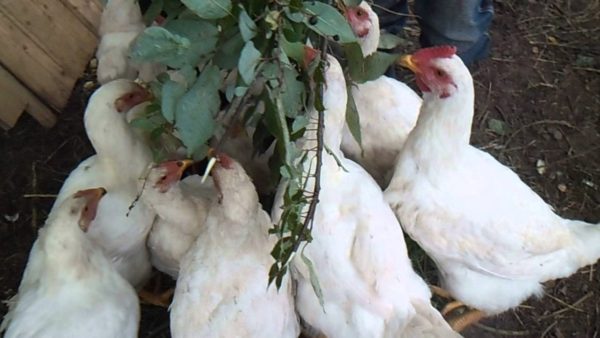

To saturate the young with vitamins, you can offer various greens, even the leaves of trees and bushes - currants, bird cherry, birch
Prohibited food
To prevent diseases and a good appetite from the menu, you must remove products such as:
- sweets, chocolate;
- alcohol;
- cheese and fat milk;
- citrus fruits and melons;
- sausage, sausages, smoked meats.
In order for birds to develop a strong musculoskeletal system, they need vitamin and mineral supplements containing calcium, phosphorus, zinc, copper and manganese. They are already included in the compound feed, but with natural nutrition it is necessary to use supplements, for example, "Calcemin D". The drugs are added in small doses to drinkers every three days.
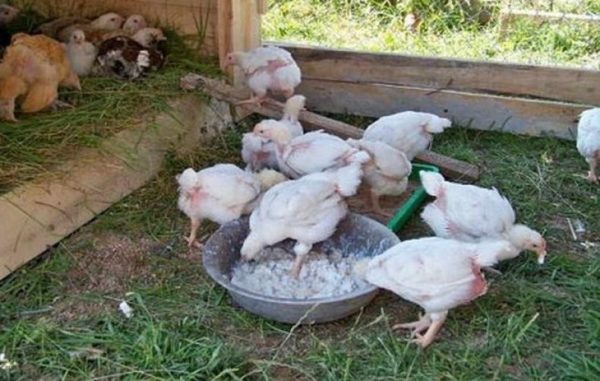

Natural nutrition helps reduce costs and makes chicken meat more tender
Growing broiler chickens on natural products has many advantages. Costs for industrial compound feed completely disappear or are reduced as a result of combining purchased mixtures with free feeding in the form of food waste, tops and weeds.
Feeding with compound feed in poultry farms
When fattening with full-feed compound feeds in an industrial environment, a four-period feeding system is used. Chicks receive a balanced diet without additional food additives and grow rapidly.
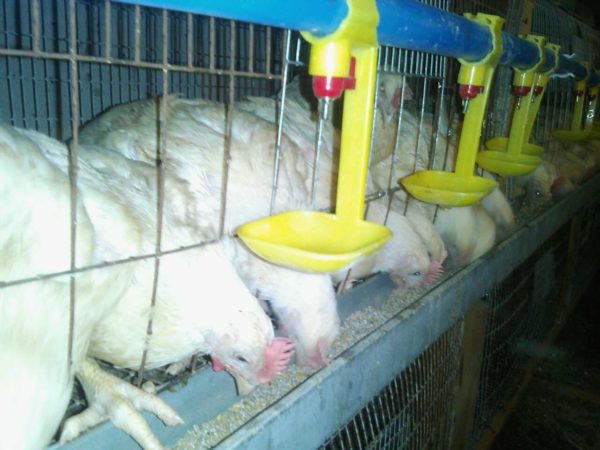

At poultry farms, broilers are fed only with compound feed
Table # 1. Four-way feeding scheme for broilers depending on the period of life
Compound feed on a small farm
At home, the owner of a small farm may find such a system uneconomical. Poultry farmers using compound feed choose a three-period scheme for growing broilers, replacing the pre-start stage with home feeding with cereals, cottage cheese and boiled eggs.
Step-by-step instructions for compound feed feeding
Step 1
Introduced compound feed rich in proteins, PC-6-1 in small granules. Its composition based on grain and fermented milk products helps to strengthen the musculoskeletal system and improve the digestion of babies. The addition of granules starts with small dosages, approximately 25 grams. Additionally, chickens are offered greens and grated carrots.
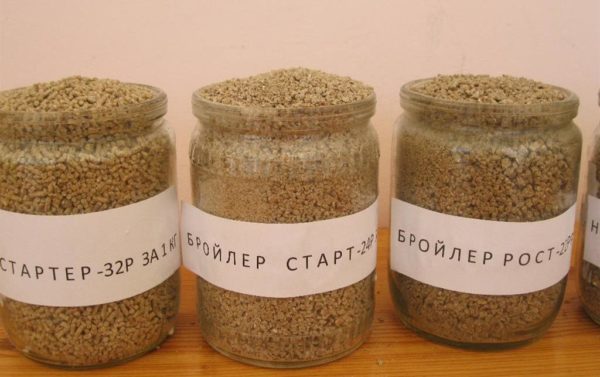

Fine-grained starter compound feed
Step 2
From the 15th day of hatching, an active increase in the weight of broilers begins. At this time, PK-6-2 is preferable, made in medium-sized granules. Bone meal, lysine and vegetable oil are added to the initial components.For better weight gain, it is kneaded on dairy products.
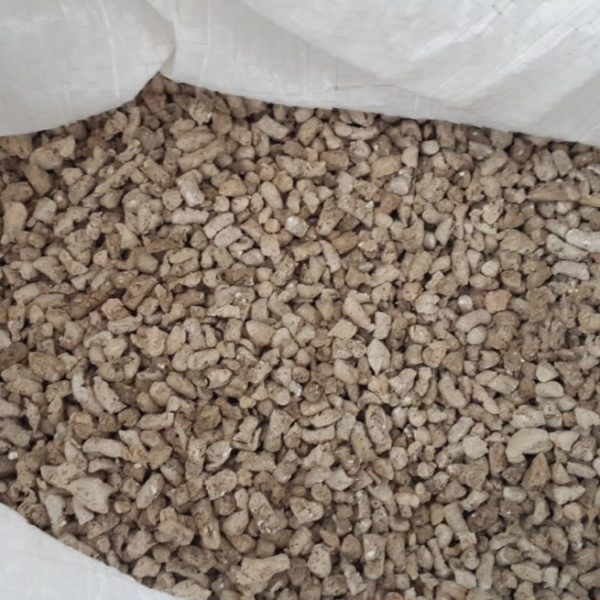

Feeding food with medium granules
Step 3
When the chickens reach the age of 30 days, they are given a large-granular mixture PK-6-3 with green cultures, fat and yeast in the composition. Such feed contains less proteins, but the vitamin and mineral composition is enhanced here.
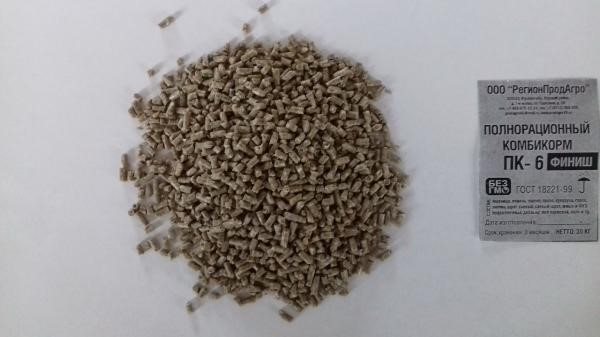

Finishing large-granular feed for broilers
Thanks to this approach, it is possible to slightly reduce feed consumption, especially if additional nutrients are introduced.


The table shows how much a broiler eats compound feed at different periods of life.
As an additional complementary food for birds raised for meat, use:
- wormwood herb to improve appetite and growth rate;
- greens, including tops and garden weeds - for fortification;
- onions and pumpkin from one week of age - for the prevention of helminthiasis;
- cottage cheese, bone meal and boiled fish - to enrich the diet with protein, calcium, iodine.
Chicks need a minimum of 1.7 liters of clean water per kilogram of feed. For the prevention of intestinal infections, a weak solution of manganese is added to it weekly.
Independent production of compound feed
According to the three-stage scheme, you can feed the broiler and your own compound feed. At the first stage, from 5 to 15 days, the composition should contain corn and wheat grains, meat and bone meal, chalk mixture and premixes. In addition, add chopped greens in a small amount. At the second stage, from 16 to 30 days, peas, feed fat and return are added to the composition. On the third, the composition is similar to the feed of the previous period, but the proportions of the components change.


The table will help you compose a complete feed at home
The third stage of feeding is applied before the slaughter of poultry, which is usually carried out in 42–45 days, less often in two months. Further maintenance of broilers is unprofitable as they stop gaining weight. Before slaughter, the chickens are kept for 14 days without gravel additives, they are not given industrial-made bioferings and medicines.
Step-by-step instructions for feeding broilers for fast weight gain
When growing at home, it is important not only to choose high-quality food, but also to ensure the correct diet. Feeding babies up to two weeks of age eight times a day. Water must be present around the clock. To prevent death, it is tinted with potassium permanganate. From 15 days, chickens are transferred to a six-meal diet. After a month, you can offer food four times a day, but in large quantities.
Instead of breakfast, broilers are better off serving wet mash. For babies aged 7 to 14 days, the composition is made as follows.
Step 1
Take in equal proportions of corn, buckwheat, wheat, barley and oatmeal, slightly boil
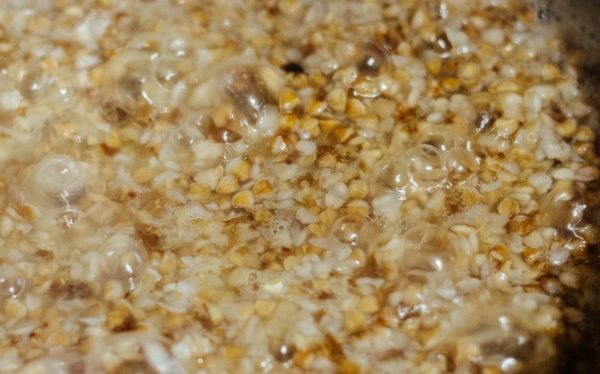

Step 2
Add some bone meal and sunflower meal
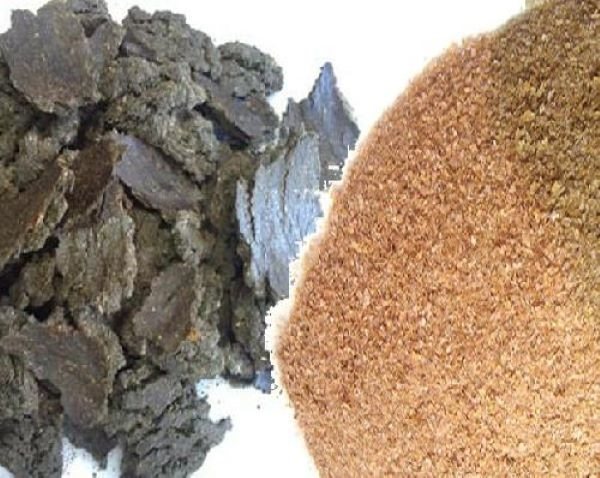

Bone meal and sunflower meal
Step 3
The composition is kneaded on low-fat kefir at the rate of 30 ml per individual and allowed to stand for a quarter of an hour.
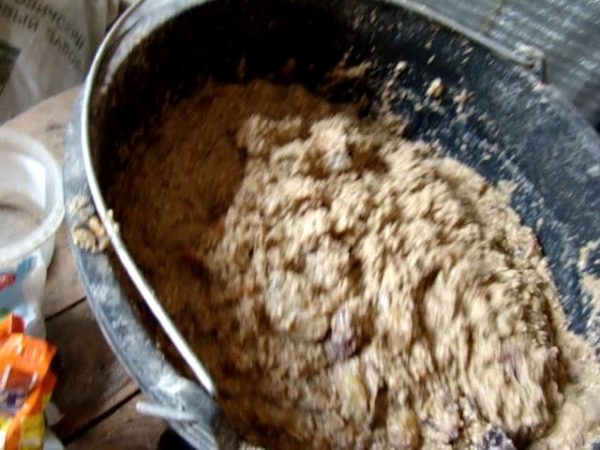

From ten days of age, finely grated carrots and cabbage leaves, garden herbs can be added to the feed mixture. The volume of the vitamin composition is gradually increased from five to twenty grams.
For older chickens, a mash based on crushed barley with the addition of crushed shell or chalk powder, as well as bone meal and cottage cheese is suitable.
In addition to nutrition, broilers are provided with the right conditions for better growth. So, the temperature in the nursery for the smallest should be less than 28 degrees. They need round-the-clock lighting, otherwise the birds will not find food and water. From one week of age, the lighting is reduced to 16 hours, and from one month to 14. The temperature is maintained at no lower than 24 degrees.
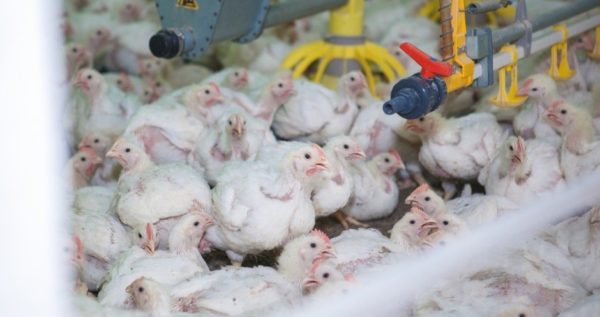

Broilers are kept quite compact
Broilers do not need spacious poultry houses.For kids, a square meter is enough for 18 individuals, after a crescent, 10 young chickens get along well in a similar space. Walking is not allowed, otherwise the chicks will lose weight.
A healthy broiler chicken boasts massive breasts and plump thighs, but in general it resembles a ball.
With a sharp drop in temperature or inappropriate lighting, broilers become sick and can lose 50 percent of their body weight. But if you observe the feeding regime and arrange a comfortable content, after a month and a half you can start slaughtering.
Video - How to feed broilers from hatching to slaughter
Broiler conditions
Broilers do not need to create any special housing conditions, but they need a special feeding regime and a special diet. When planning to breed chickens for meat, each owner tries to calculate how much feed is needed to feed the bird, and how much money will have to be spent on it.
Best Broiler Breeds
But first, the newly hatched chicks need to be provided with comfortable conditions for living and growing. At first, they can be kept in special cages made of metal mesh, and they must be additionally heated with infrared lamps or ordinary incandescent lamps. The first 7 days in the room where the chickens are kept, the temperature must be maintained within the range of 26-33 degrees Celsius, on the following days it can be reduced to 19-20 degrees.
If they are kept on the floor or in wooden and cardboard cages, they should be littered with sawdust, shavings or straw about 10 cm thick, and the litter should be changed as it becomes dirty. Youngsters are seated at the rate of 15-18 heads per 1 sq. meter.
The room should be lit around the clock, but so that the light is not too bright and does not damage the eyes of the chickens, the lamp can be painted blue or green.
To protect chicks from gastrointestinal infection, feeders and drinkers should be thoroughly washed with hot water and detergents and rinsed thoroughly. In addition, you can water the young with a slightly pink solution of potassium permanganate. Chickens also need to be given antibiotics, which will also protect them from disease.
Sick chickens should be separated separately, and try to leave them, giving medicines and quality feed.


Reasons for poor appetite in broiler chickens
When feeding broilers, you need to monitor whether the pets eat their portions completely. If the birds are not eating enough, find out why they have lost their appetite and address the causes of their loss of interest in food. Otherwise, the chicks will not have time to gain the required weight before slaughter.
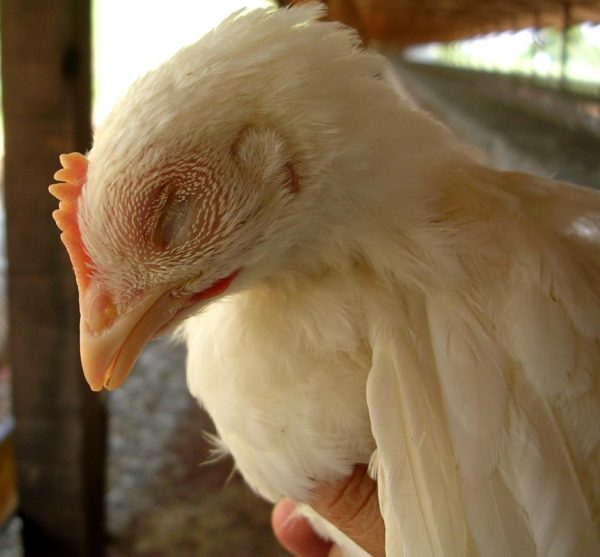

Chickens infected with worms become lethargic and refuse to eat
Broiler appetite can be impaired by:
- stale food;
- lack of fresh drinking water;
- helminthiasis.
Wet mash should be freshly cooked. It is necessary to fill the feeders with even dry granules so that the chicks have time to eat them in half an hour. If a certain amount of feed remains, it must be removed and the containers rinsed. In this case, it is better to add one more meal per day to the chicks. Never give rotten food or food that has expired to birds. Clean liquid in the drinking bowls must be around the clock, it must be replaced twice a day.
When infected with parasites, the bird becomes lethargic and loses its appetite. To prevent infection, broilers are periodically fed with antihelminthic drugs. If it is clear that one of the birds is sick, he is removed from the rest and consulted with a veterinarian.
The wrong approach to feeding and illness will immediately manifest in the condition of the chickens, but in most cases the situation can be corrected, and broilers will gain the required weight before slaughter.
It is especially important to control the feeding of babies in the first seven days after hatching.It is during this period that all vital systems develop rapidly, on which further weight gain depends.

